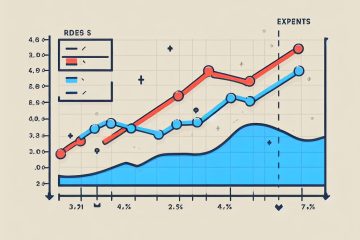Obtaining a mortgage is a significant milestone in one’s journey towards homeownership, offering financial stability and the joys of having a place to call your own. However, amidst the excitement of homeownership, it’s crucial to be aware of the potential pitfalls, including mortgage penalties. In Canada, bank mortgage penalties have been a subject of concern for many borrowers. In this blog post, we’ll demystify these penalties, explore the factors affecting them, and equip you with the knowledge to make well-informed decisions for your mortgage journey.
1. Understanding Mortgage Penalties
Mortgage penalties, or prepayment penalties, are fees incurred by borrowers for breaking or changing the terms of their mortgage contract before the specified term ends. These penalties are in place to compensate for the potential loss of income due to early mortgage termination.
2. Calculation Methods
In Canada, there are two primary methods used to calculate mortgage penalties:
- Three Months’ Interest: This method involves charging the borrower three months’ worth of interest on the outstanding mortgage balance. It is the most common approach for variable-rate mortgages.
- Interest Rate Differential (IRD): For fixed-rate mortgages, banks typically use the IRD method to calculate penalties. The IRD is the difference between the current interest rate and the rate the lender can charge for a mortgage term similar to the remaining term on the borrower’s mortgage. The IRD penalty can be significantly higher than the three months’ interest penalty, making it crucial to understand the implications of breaking a fixed-rate mortgage early.
Click here for a video primer on the two types of penalties.
3. Factors Affecting Mortgage Penalties
Several factors can influence the magnitude of bank mortgage penalties in Canada:
- Mortgage Type: Fixed-rate mortgages usually have higher penalties compared to variable-rate mortgages, due to the IRD calculation method.
- Prepayment Privileges: Some mortgages allow borrowers to make additional payments or increase their regular payments without incurring penalties. Prepayment privileges can impact the penalty amount if the borrower has been using these features.
- Interest Rate Environment: In a declining interest rate environment, IRD penalties may be higher. This is a result of the difference between the current rate and the lender’s rate increases.
- Mortgage Term: The length of time remaining in the mortgage term will also impact the penalty. The earlier the mortgage is broken, the higher the penalty may be.
4. Negotiating Mortgage Terms
Before signing a mortgage agreement, it’s essential to carefully review the terms and conditions, particularly those related to mortgage penalties. While some lenders may have more rigid penalty structures, others might offer more flexible options.
5. Seeking Professional Advice
When navigating the complexities of mortgage penalties, seeking advice from a qualified mortgage professional is invaluable. We can guide you through the fine print, explain the implications of different mortgage types, and help you make a well-informed decision.
Conclusion
Mortgage penalties are a crucial aspect of any mortgage agreement and understanding them is paramount to safeguarding your financial future. As a responsible borrower, take the time to review the terms of your mortgage carefully and consider consulting a mortgage expert if needed. By being informed and proactive, you can mitigate the impact of potential penalties and ensure that your homeownership journey remains financially secure and rewarding. Remember, the key to a successful mortgage experience lies in knowledge and careful planning.


